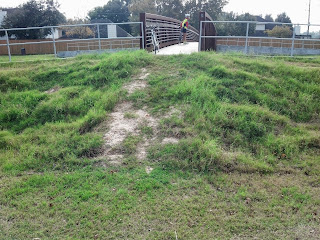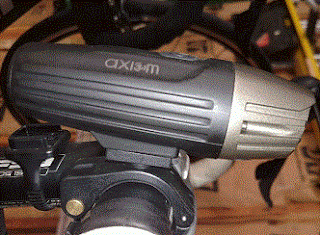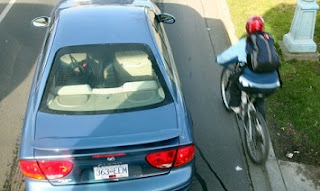I don't know about you, but I like having a computer on my bike: I want to know how fast I'm going, how far I've gone, and the fastest I've gone today (for the record, I hit over 42 MPH on a bike outside Austin once). In other words, when my computer goes wonky I replace it...
| A few rides ago the CatEye Strada I'd been using started acting up. At first, I was just getting slightly shorter distances than the Ms on the same ride, but pretty soon it was serious. I replaced batteries in both the sensor and the computer, but to no avail (the Strada was, of course, six or eight months out of warranty). So I sucked it up and bought a new on. I went to my local REI and picked up a CatEye Micro Wireless. |
  |
Sadly, that was a mistake. CatEyes are always a pain in the tuchus to set up, in part due to those horrid instruction sheets, but this one seemed even worse than usual. After I
did get it set up, I just clipped it into the mount for the Strada, left the sensor in place, and took off on a 25-mile spin. According to the Ms's computer, it was 25 miles -- according to the new Micro Wireless, it was a little under 21 (yes, the tire size was correctly set: 2105mm for a 700x25C). That's not to mention that the speedometer read 0.0 for all but a few hundred yards, the average speed was 11.1 MPH, and my alleged maximum speed was 4.6 MPH (a mathematical impossibility with that average). I changed the battery in the computer and installed a new sensor -- on the other fork -- but it didn't make any difference.
Kudos to REI: they gave me a full refund.
So I tried a different tack: A
Specialized SpeedZone Sport Wireless that I bought at my LBS. Problems abounded when I opened it: for one, the battery in the computer was dead (it takes
years for a CR2032 to go dead without a load). For another, there were no instructions for using the stem mount doodad they'd included -- heck, they didn't even list it in the parts. There was a note on the instruction book, though, telling me to go to www.specialized.com and click on the "support" tab. Surprise, surprise: there
is no "support" tab -- there hasn't been one in about five years! So I sent an email to what they call Rider Care asking what size stem the doodad fits... in answer to my question "are there instructions anywhere?" got this back:
"I have included the link to the stem mount for the SpeedZone computers. This is mounted under the top cap. It is a pretty easy installation, you simply need to remove the bolt and top cap, put this mount on top of any spacers you have, and reinstall the top cap and bolt."
Of course, it took 50 hours or so to get even
that response... by which time I'd already returned the damned thing (kudos to Matthews Bicycles -- returned, no questions asked). Interestingly enough, in the interim I found a PDF of
the instructions, which you can see to the left. Note the "helpful" pictures... NOT. That's not to mention that I don't have the specs for torque on the stem cap bolt and don't have a torque wrench, either.
Finally, I gave up and went back to REI and replaced
the Strada with another one. So far, it seems to work just fine -- and CatEye appears to have gotten the message about their crappy instructions, at least to some point. By the by, jeers to the local Performance store: I was in there Friday, Saturday, Sunday, and Tuesday -- and the rack of computers was more or less empty every day. They really ought to be ashamed...
But will someone tell me
why it is so hard to find a non-GPS enabled bicycle computer? Frankly, I don't need a GPS to tell me where I am, and I'm pretty sure that the vast majority of cyclists don't need a $300 device to tell them how fast they're going. At the other end of the spectrum, I don't know about you but I'm not gonna buy a nineteen-dollar "wireless" bike computer from some weird Chinese company...
copyright © 2017 scmrak



















